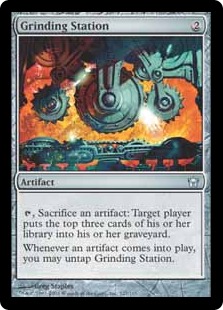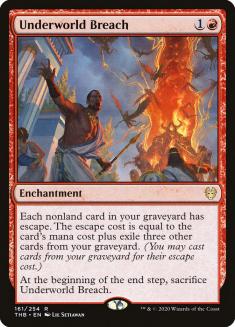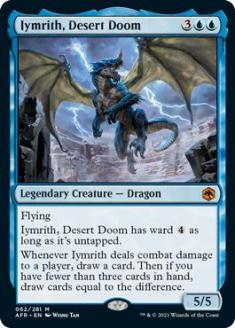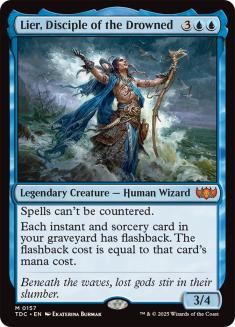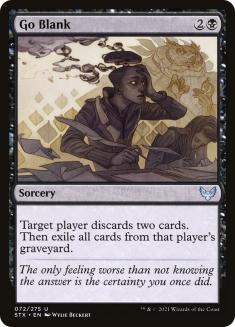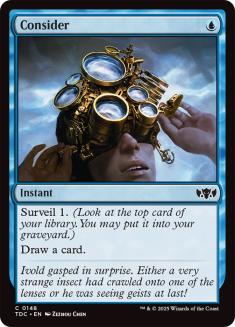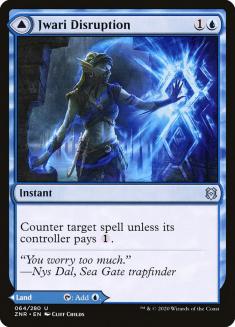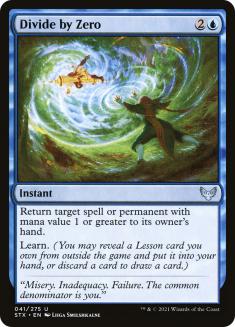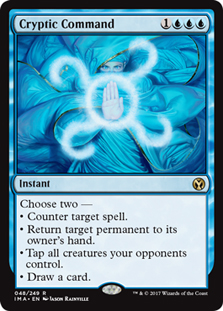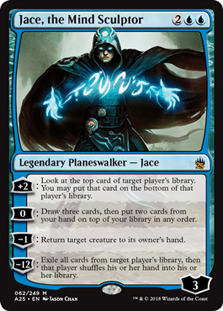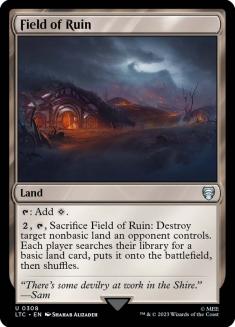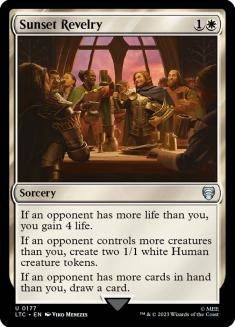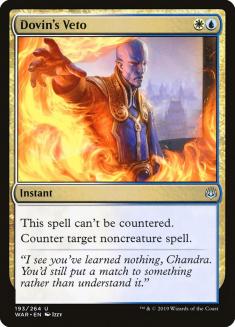It has been nearly a year and a half since I played my last high-stakes Magic tournament. I thought I went out with a bang, taking down SCG Regionals in North Carolina with a sweet Four-Color Grinding Breach concoction before the pandemic hit. There was a strong chance that tournaments would not return in a timely fashion, especially for us older folks that are hitting the golden years of our competitive play. My estimate was a 2023 return to large-scale paper events, which could have led to a forced retirement for the Esper Professor™.
Life, for most of us, has changed drastically since the initial shutdown. I picked up some additional digital hobbies, jumped back into a grad program to finish my administrative endorsement, and grew my family. With the new additions and my year-long career, playing competitive Magic again should have been a longshot in a world that makes sense. The issue is my love of the game is relentless, especially in the competitive scene. The moment Star City Games mentioned the return of the Invitational, I begged one of my best friends for some Standard cards, pieced together the newest version of Azorius Control, booked a place to stay in Roanoke, and set the Tesla to charge to max battery for my road trip on October 28th.
For the last year and a half, my digital testing has not done the control archetypes justice in any format. I am uninterested in an eight- to twelve-hour computer tournament, especially with the chaos that ensues in my house. Paper Magic runs through my veins and has always been half of my motivation to play the game. The other half of my motivation is you all, the readers and fans of my work, that continue to support me on this great platform that I have written on for the last fifteen years. With paper Magic back and my content still being delivered, I’m as energized as the 21-year-old Shaheen that drove across the country to play in his first Nationals tournament.
The Invitational is a two-format tournament, Modern and Standard, with both formats having strong control options. I have written about Dimir Control in Standard since the first card was previewed for post-rotation Standard. The error I made was putting my faith in the wrong win condition, Iymrith, Desert Doom, when there was a far superior version available. Iymrith was decent for me, closing games out in a few turns, but it did not have the power level necessary to stabilize on its own. I often had to use the first couple of copies as fodder, winning by the skin of my teeth with the final copy. There was a more powerful option right in front of me this entire time, but I was too dazzled by the ward protection that Iymrith had.
Lier, Disciple of the Drowned is the win condition control has deserved for a long time. It does not have the removal protection that previous control creatures had; however, it does have absurd abilities that end the game immediately if not removed. Once it’s on the battlefield, spells can’t be countered and each instant and sorcery card in your graveyard has flashback equal to that card’s mana cost. I knew the abilities on Lier were more powerful than anything else in its class, but I did not trust its fragility. This control deck showcasing it gets around that concern with an armada of hand disruption, naturally removing the removal spells before it even arrives.
Creatures (3)
Lands (24)
Spells (33)

Many of these Dimir Control decks have been floating around the online metagame, especially in the last few days. With the dominance of Izzet Epiphany and Izzet Dragons, this take on control puts an effective assault on the opponent’s hand. When I first saw this list piloted by Danny Jessup, I immediately put it in my What We’d Play deck selection for Innistrad: Midnight Hunt Standard. Just from seeing it on paper, I knew that opposing blue decks would have a terrible time against Dimir Control, as it tore them to shreds with Duress and Go Blank. The initial lists had four copies of each but had to drop it down a notch with the continued dominance of Mono-Green Aggro❄ and Mono-White Aggro❄. Out of the two aggro decks, Mono-Green Aggro❄ is the more prevalent in competitive play, which guided the changes from those original lists.
In fear of the big green creatures, some Dimir Control players have significantly dropped their Duress and Go Blank counts. I have seen as low as two of each, which is a grave mistake. The strength of this deck is its discard, not counters, due to the synergy with Lier. Even the aggro decks can get harmed by well-timed discard, so drawing them is not a death sentence like it used to be. When playing against the strongest aggro decks in past Standard formats, it was a control requirement to draw the correct side of the deck. In this new format, Dimir Control can defeat many aggro draws with a healthy mix of disruption off the top of the library.
I have kept six discard effects in the main, with the other two in the sideboard. I couple them with Consider, a strong cantrip for this deck that feasts off a robust graveyard. The main deck is still built to smash Izzet-based decks, while having a fighting chance against the top aggro decks of the format. Both the Crippling Fear and the Shadows’ Verdict can take down a wave of creatures Game 1, in addition to having a higher chance of being drawn in the sideboarded games. The removal package of Dimir Control is still the strongest in town, as well as having access to three copies of Field of Ruin as a reward for being a two-color deck.
The rest of this deck operates as you would think, producing some strong early- and mid-game disruption with a Lier finish. Lier enters the battlefield and usually takes care of the remaining battlefield and hand threats, without the ability to use countermagic. That is a vital ability on the card, because even I would not want to live in a world where it could summon Negate out of the graveyard for an easy win. I still have one Negate in the sideboard, for the scenarios where Lier is not destroying my opponent and I must stop a foretold Alrund’s Epiphany. The only other counterspells in the deck are a couple of copies of Jwari Disruption, but it is tough to count spells that double as lands.
Not much has changed in the sideboard and there is not much wiggle room for sweeping overhauls. It provides additional sweepers, a must for Dimir Control to effectively take down the aggro decks without requiring some good luck during the draw step. Outside of that and some extra disruption, the sideboard is limited by the Learn mechanic, with multiple Lesson cards taking up slots. Since Divide by Zero gets around the Lier restriction, it is a small price to pay for this powerful synergy. It does feel weird playing a control deck without a pile of hard counterspells, but it is the best option that we currently have.
For my Counterspell addiction, there is the Modern half of the tournament.
Azorius Control has gone through some major renovations since the last time I wielded it in a paper event. There were some joke versions that ran four copies of Chalice of the Void and no Path to Exile that tried to lock opponents out that were dependent on their early-game. That joke has become the new reality, at least to some extent. When this type of Azorius Control hit the scene, it was playing three or four copies of Chalice of the Void. These days, most decks run one or two, since drawing multiples can be devastating. Multiples in the matchups where Chalice of the Void locks out the opponent are no big deal; however, there are some decks that easily brush them off. I landed on playing two in the maindeck, zero in the sideboard, and I have been very happy with the results.
My version of Azorius Control will look like those floating around Magic Online, but I have made some significant changes. I added a copy of Rest in Peace to the main, which has been an all-star. There are so many decks that utilize the graveyard and this one-of can win upon resolution in the right situation. Just like Chalice of the Void, Rest in Peace is a Modern hate card that some decks have no natural answer to Game 1.
The other spicy one-of is Cryptic Command, a counterspell I am not comfortable leaving behind in Modern. It has lost the race against Archmage’s Charm, but that was to be expected. When there are this many great one-drops and fast decks, a four-mana counterspell is not the place to draw the line in the sand. Counterspell and Archmage’s Charm do a great job in holding the line, behind the powerful planeswalker army that Azorius Control unleashes.
Some of my friends enjoy cutting Jace, the Mind Sculptor, which is the easiest way to strain a relationship. If Jace, the Mind Sculptor is legal in Modern, my tap-out control decks will summon it. I’m sad about only finding room for one copy, but at least I frequently draw it in this deck. With the assistance of planeswalkers, Castle Vantress, Spreading Seas, Archmage’s Charm, Cryptic Command, Shark Typhoon, and Memory Deluge, I see low-count cards more often. I have been especially impressed by Memory Deluge, the strongest card draw spell in Standard, which has made a splash in multiple older formats.
The biggest maindeck update that I made was adding Field of Ruin back to the lineup. I don’t get why players tossed it aside in this metagame, where lands with abilities are more frequent than ever. This is a two-color control deck with zero one-mana investments, making a colorless land not the end of the world. Back in my deck, we packed four Cryptic Command with four Field of Ruin and did just fine, so let’s just keep the Archmage’s Charm argument to ourselves.
There is some validity that four colorless lands were a bit over the top, so I compromised down to two. This has felt like the perfect number and has saved the day on countless occasions. Even without the pressure of Mono-Green Tron, there are plenty of lands to take out. Spreading Seas does a great job of assisting with this requirement, but it is silly not to add a few free helpers to lighten the workload.
The other updates were minor, shedding some utility and creature-lands for others, as well as revamping some of the sideboard. Each of these sideboard cards sees use in Modern, but no two Azorius Control lists exactly match. Creating the perfect mix of Dovin’s Veto, Supreme Verdict, Sunset Revelry, and other great on-color control cards is an impossible task. The metagame shifts daily, with archetypes rising and falling in popularity, forcing us Azorius Control folks to quickly adapt. Today I am playing two copies of Sunset Revelry; tomorrow it may be zero. For the Invitational, some version of these two deck choices will be in my bag, where I will be ready to turn my words into actions.


